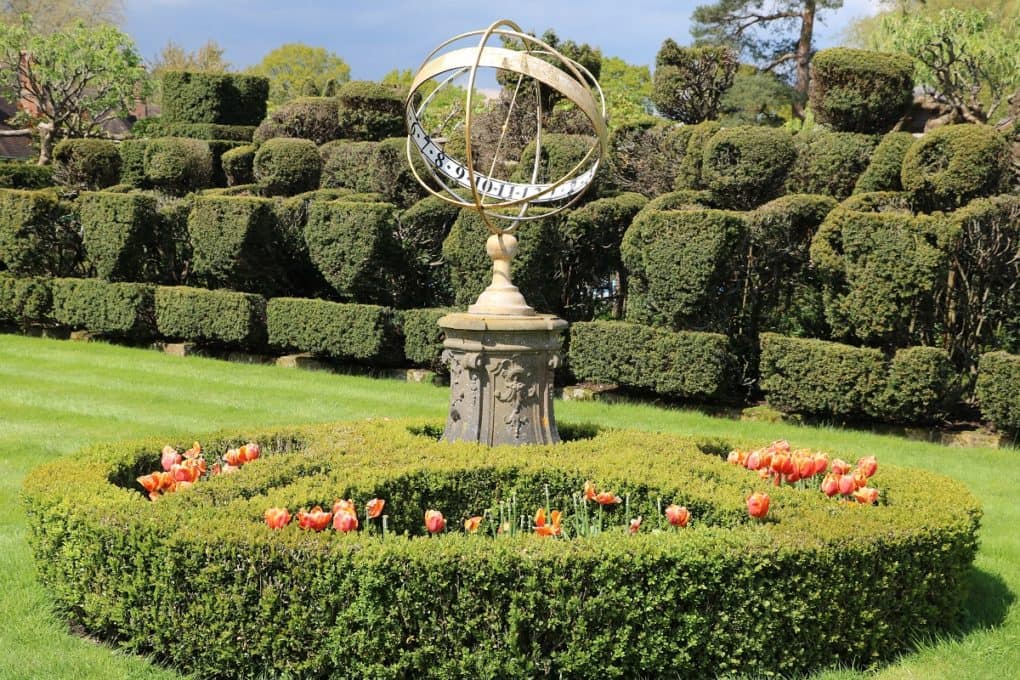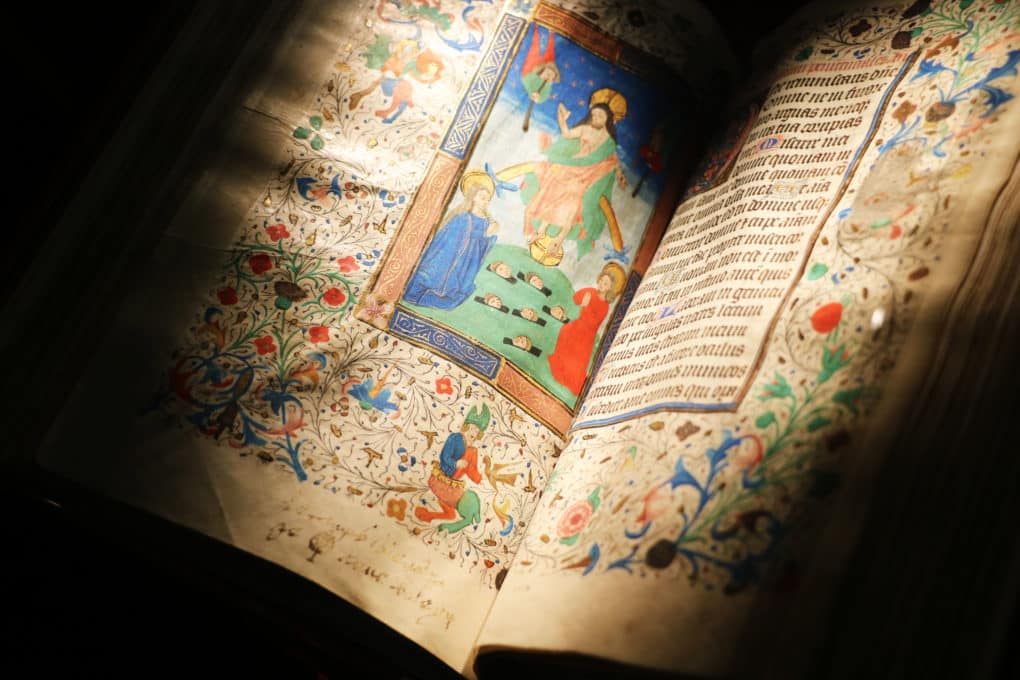
 Maps & Globes is the theme for #FeatureFridays with Historic Houses.
Maps & Globes is the theme for #FeatureFridays with Historic Houses.
In the Tudor Garden is an amazing Armillary Globe, and it dates to the reign of Queen Anne (reigned 1702-1714). The use of such Globes dates back to ancient times right up to Tudor period and beyond. Armillary Globes or spheres were generally used to demonstrate the movement of the celestial heavens around the earth at its centre, but when a small drawing of an armillary sphere is doodled with an inscription in a religious work then that sphere usually symbolises time. One such inscription was made by Anne Boleyn, arguably Hever Castle’s most famous resident. In a book of hours, owned by Anne which is now on permanent display at Hever Castle, Anne drew an astrolabe or armillary sphere, under an inscription “Le temps Viendra, or “The Time will come”.

We are not sure when Anne wrote this inscription, or exactly what it’s meaning is, however it is written on a page next to an illustration of the Last Judgement, which may indicate that Anne was referring to her mortality.
Anne was afforded an unusually good education. Her father, Thomas Boleyn, was a humanist who believed that both sons and daughters should be educated. Through his successful career as a diplomat to King Henry VIII, Thomas was able to secure a coveted position for Anne at the Habsburg court of Margaret of Austria in the Netherlands, and then at the Valois court in France. Anne was exposed to new radical ideas during her time in the European courts and formed radical religious opinions. This astrolabe, therefore, may also tell us something about her exposure to both new and old ideas.
Discover more about the Book of Hours here.
If you enjoyed this item on Maps and Globes, why not discover the previous #FeatureFridays news items:
Book your visit to Hever Castle & Gardens.
Within the grounds of the Hever Castle Estate, there are two opportunities for you to stay the night with us.
Hever Castle has played host to many important events and celebrations for over 600 years. In 1903 when William Waldorf Astor set about restoring Hever Castle to its former glory, he added the Astor Wing, to accommodate his family and guests, before creating a lake and the spectacular Italian Garden to house his impressive collection of ancient Greek and Roman statuary.
There are multiple places to eat & drink across the Hever Castle Estate. Select between the Castle & Gardens and Golf Club below to discover more.
Set in the mature grounds of the Hever Castle Estate, Hever Castle Golf Club is a 27 hole Kent golf course that will encourage and inspire all golf enthusiasts.
Set in the mature grounds of the Hever Castle Estate, the Wellbeing Centre consists of five smart treatment rooms.